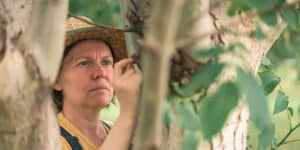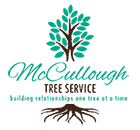By: Shelby McCullough| Published: June 6, 2022
Trees provide beauty, shade, and privacy but rely on us to keep them healthy. Trees can become unhealthy due to diseases, weather conditions, invasive species, and pests. If you can find out what’s causing your tree’s health to decline, you can try to save it.
Do you need help with your trees? Call the trusted tree company in Windermere. Below, we have compiled some tips on how to find tree pests and diseases.
How to Check Your Trees for Pests

A tree’s susceptibility to pests and diseases can differ based on the species. Start by getting to know the trees on your property and the pests that may threaten them. Check your trees for discoloration, rapid canopy thinning, irregular leaf size, and wood borer holes.
Unusual Activities
Search for any bugs or activities that seem out of place. For example, an invasive beetle infestation can kill your favorite ash trees. A large population of one bug species indicates a tree infestation.
Inspect the Tree Trunk
Carefully examine the tree trunk and branches. If the trunk appears damaged, you may have a pest problem. Trees rapidly die when tree pests and diseases burrow holes into their trunks.
What Types of Pests Invade Trees in Windermere?
Florida has many tree species and various pests that frequently invade them. While most pests attack weak and unhealthy trees, some can impact mature and healthy trees.
The following list includes the pests that can harm your trees:
- Bagworms
- Gypsy moth
- Wood borer
- Emerald ash borer
- Eastern tent caterpillar
- Southern pine beetle
- Bark beetles
- Sap-sucking insects
- Red spider mite
- Aphids
How to Check Your Trees for Diseases
Trees often show disease symptoms, such as leaf spots, foliage browning, wilting, defoliation, stunted growth, and yellowing. Tree disease can occur anywhere on the tree, even affecting the entire tree. Before treating your tree for diseases, you need to identify the root of the problem.
Causal Agents
Trees have no natural resistance to fungi such as Phytophthora, Verticicladiella, Ganoderma, etc. Fungi can cause many harmful effects, including wilting, root rot, cankers, slowed growth, and drooping. Take proper precautions by pruning and applying antifungal treatments to your trees.
Fungi tree disease occurs because of the honeydew created by sap-sucking insects. Trees infested with sucking insect colonies can develop black sooty mold. This disease can seriously weaken the tree’s structural integrity.
Dead Branches
To test your tree’s health, break off a branch and look for a green color on the inside. If you find a dead branch, examine the tree’s other branches and twigs. A dead branch or twig often indicates that the tree has a disease.
McCullough Tree Service offers professional tree care that eliminates tree pests and diseases. Our team of certified arborists is dedicated to maintaining the health and beauty of your trees, ensuring your landscape remains safe and attractive. Trust us to bring top-notch tree care solutions to your doorstep. Learn more about the potential dangers of tree diseases and fungi on our website.
Contact McCullough Tree Service today for top-rated tree services in Windermere, FL. Call us at (407) 734-5854.

